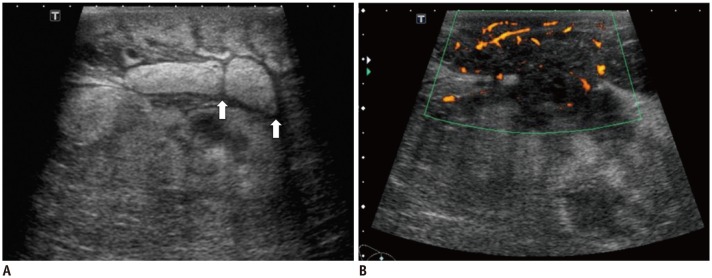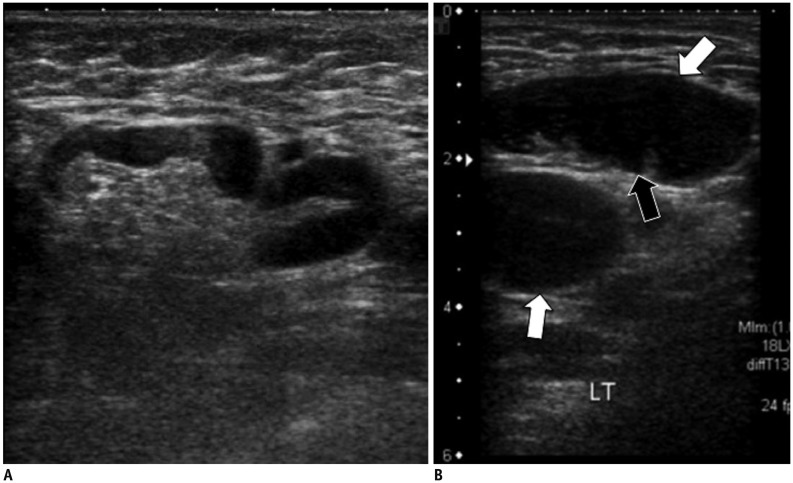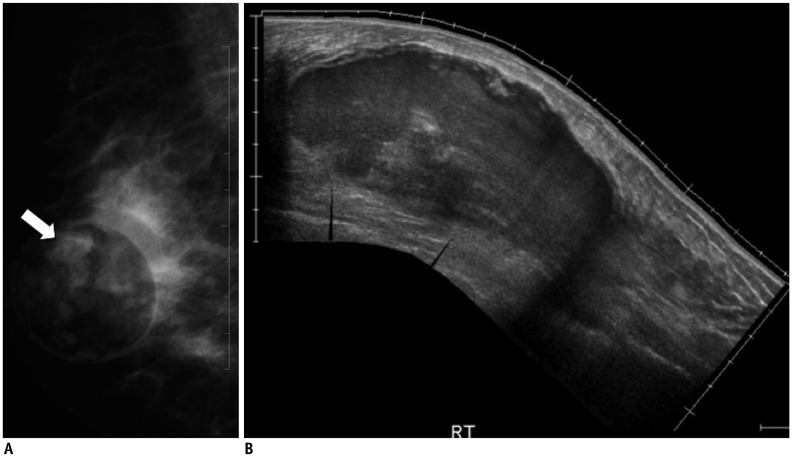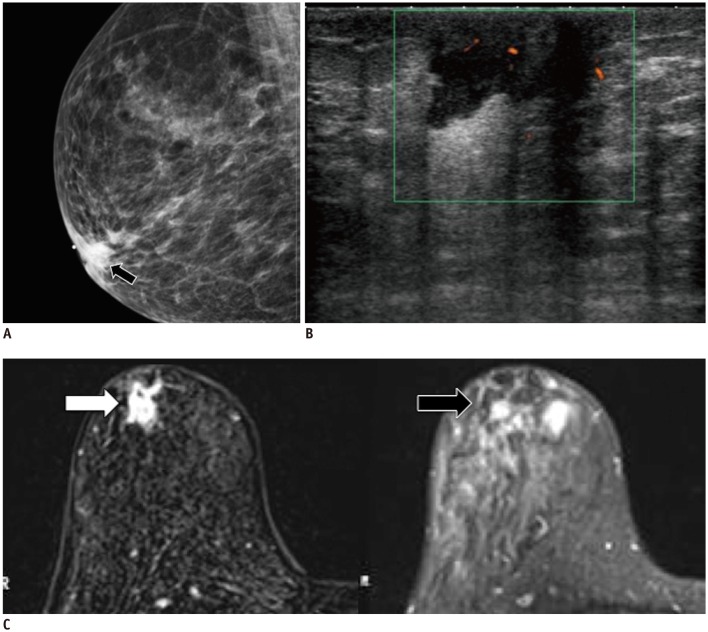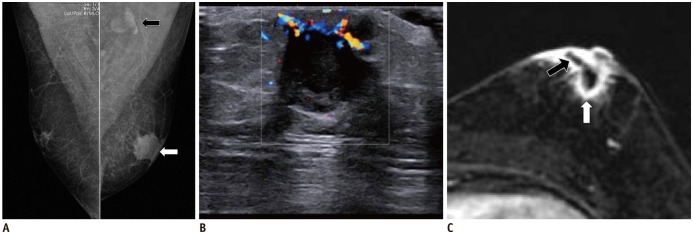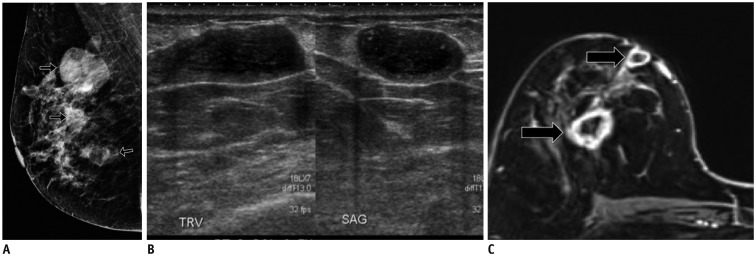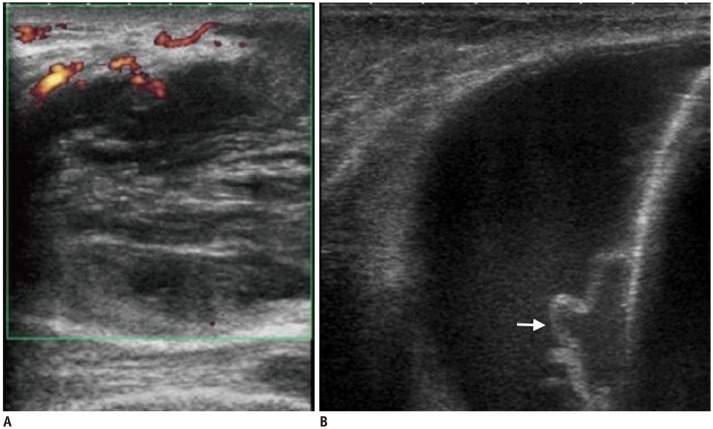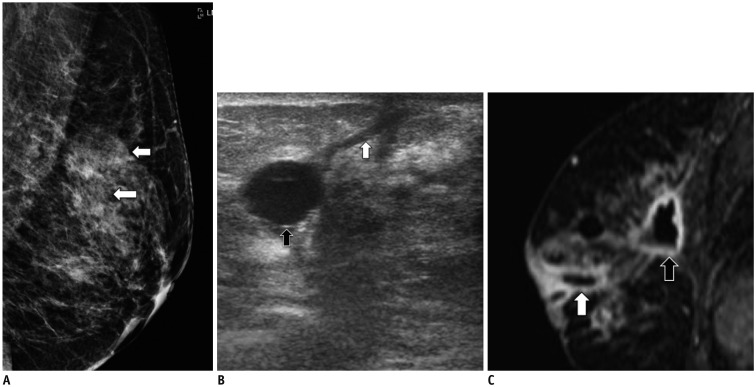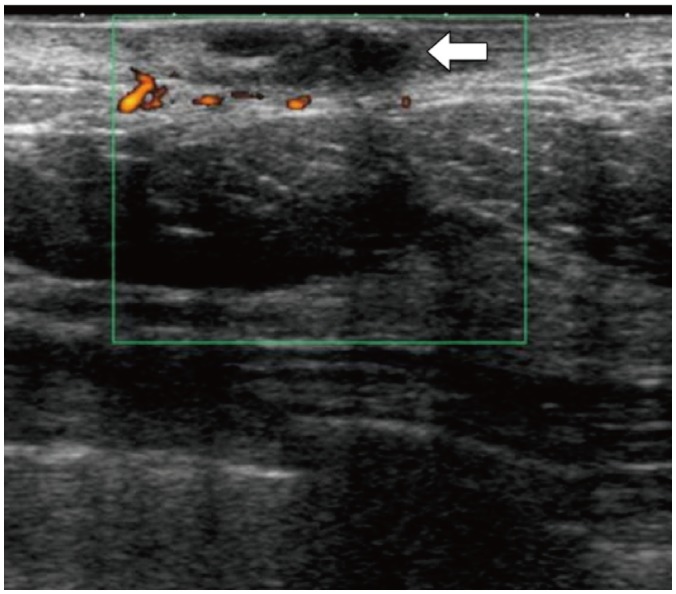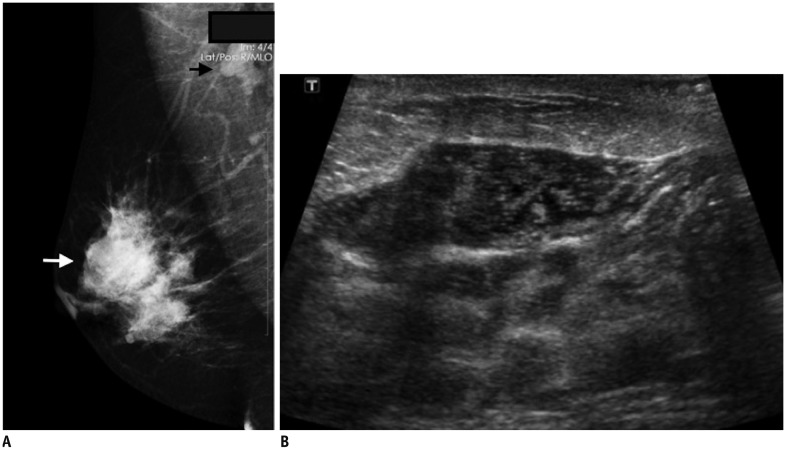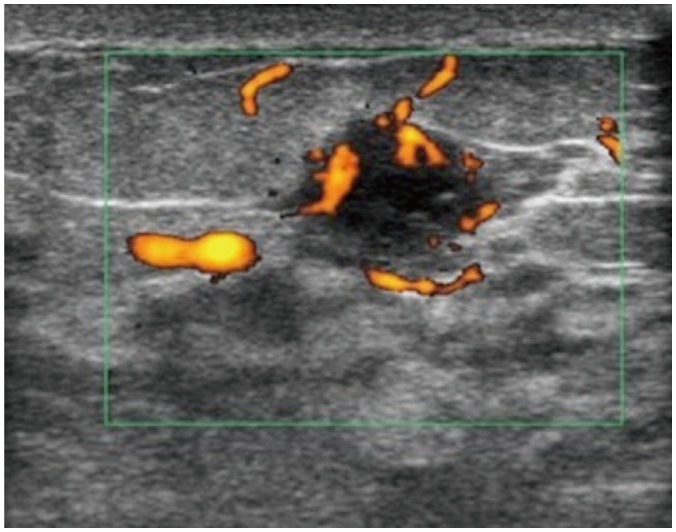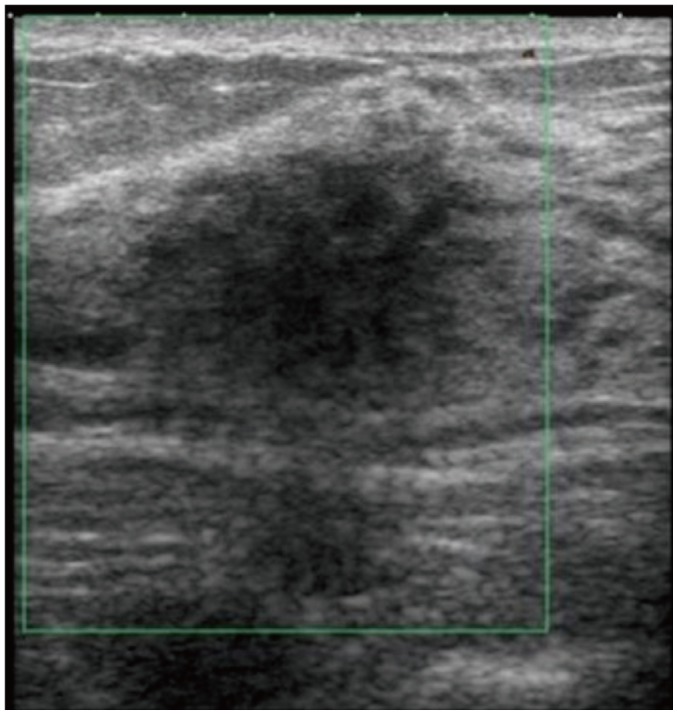Korean J Radiol.
2018 Feb;19(1):5-14. 10.3348/kjr.2018.19.1.5.
Imaging Features of Inflammatory Breast Disorders: A Pictorial Essay
- Affiliations
-
- 1Department of Diagnostic Radiology, Tan Tock Seng Hospital, Jalan Tan Tock Seng, Singapore 308433, Singapore. powey@hotmail.com
- 2Princess Margaret Hospital, Department of Medical Imaging, Toronto, ON M5G 2M9, Canada.
- KMID: 2425103
- DOI: http://doi.org/10.3348/kjr.2018.19.1.5
Abstract
- Inflammatory breast disorders include a wide array of underlying causes, ranging from common benign infection, non-infectious inflammation and inflammation resulting from underlying breast malignancy. Because it is at times difficult to distinguish mastitis and breast cancer based on clinical features, awareness of detailed imaging features may be helpful for better management of inflammatory breast disorders. Therefore, this pictorial essay intends to demonstrate radiologic findings of a variety of inflammatory breast disorders, using selected cases with mammography, ultrasound and magnetic resonance images.
Keyword
MeSH Terms
Figure
Reference
-
1. Lepori D. Inflammatory breast disease: The radiologist's role. Diagn Interv Imaging. 2015; 96:1045–1064. PMID: 26372222.
Article2. Kasales CJ, Han B, Smith JS Jr, Chetlen AL, Kaneda HJ, Shereef S. Nonpuerperal mastitis and subareolar abscess of the breast. AJR Am J Roentgenol. 2014; 202:W133–W139. PMID: 24450694.
Article3. Kamal RM, Hamed ST, Salem DS. Classification of inflammatory breast disorders and step by step diagnosis. Breast J. 2009; 15:367–380. PMID: 19496780.
Article4. Tan H, Li R, Peng W, Liu H, Gu Y, Shen X. Radiological and clinical features of adult non-puerperal mastitis. Br J Radiol. 2013; 86:20120657. PMID: 23392197.
Article5. Kwak JY, Kim EK, Chung SY, You JK, Oh KK, Lee YH, et al. Unilateral breast edema: spectrum of etiologies and imaging appearances. Yonsei Med J. 2005; 46:1–7. PMID: 15744799.
Article6. Michie C, Lockie F, Lynn W. The challenge of mastitis. Arch Dis Child. 2003; 88:818–821. PMID: 12937109.
Article7. Kim YR, Kim HS, Kim HW. Are irregular hypoechoic breast masses on ultrasound always malignancies?: a pictorial essay. Korean J Radiol. 2015; 16:1266–1275. PMID: 26576116.
Article8. Sabate JM, Clotet M, Torrubia S, Gomez A, Guerrero R, de las Heras P, et al. Radiologic evaluation of breast disorders related to pregnancy and lactation. Radiographics. 2007; 27(Suppl 1):S101–S124. PMID: 18180221.
Article9. Gunawardena RP, Gunawardena D, Metcalf C, Taylor D, Wylie L. Inflammatory breast disease: a pictorial essay with radiological-pathological correlation. J Med Imaging Radiat Oncol. 2017; 61:70–76. PMID: 27324090.
Article10. Trop I, Dugas A, David J, El Khoury M, Boileau JF, Larouche N, et al. Breast abscesses: evidence-based algorithms for diagnosis, management, and follow-up. Radiographics. 2011; 31:1683–1699. PMID: 21997989.
Article11. Baharoon S. Tuberculosis of the breast. Ann Thorac Med. 2008; 3:110–114. PMID: 19561892.
Article12. Sabaté JM, Clotet M, Gómez A, De Las Heras P, Torrubia S, Salinas T. Radiologic evaluation of uncommon inflammatory and reactive breast disorders. Radiographics. 2005; 25:411–424. PMID: 15798059.
Article13. Gao Y, Slanetz PJ, Eisenberg RL. Echogenic breast masses at US: to biopsy or not to biopsy? Radiographics. 2013; 33:419–434. PMID: 23479705.
Article
- Full Text Links
- Actions
-
Cited
- CITED
-
- Close
- Share
- Similar articles
-
- Imaging Features of the Mesenchymal Tumors of the Breast according to WHO Classification: A Pictorial Essay
- Breast lesions during pregnancy and lactation: a pictorial essay
- Sonographic Features of Palpable Breast and Axillary Lesions in Adult Male Patients: A Pictorial Essay
- Postoperative Imaging Findings of Colorectal Surgery: A Pictorial Essay
- Imaging Spectrum of Augmented Breast and Post-Mastectomy Reconstructed Breast with Common Complications: A Pictorial Essay

